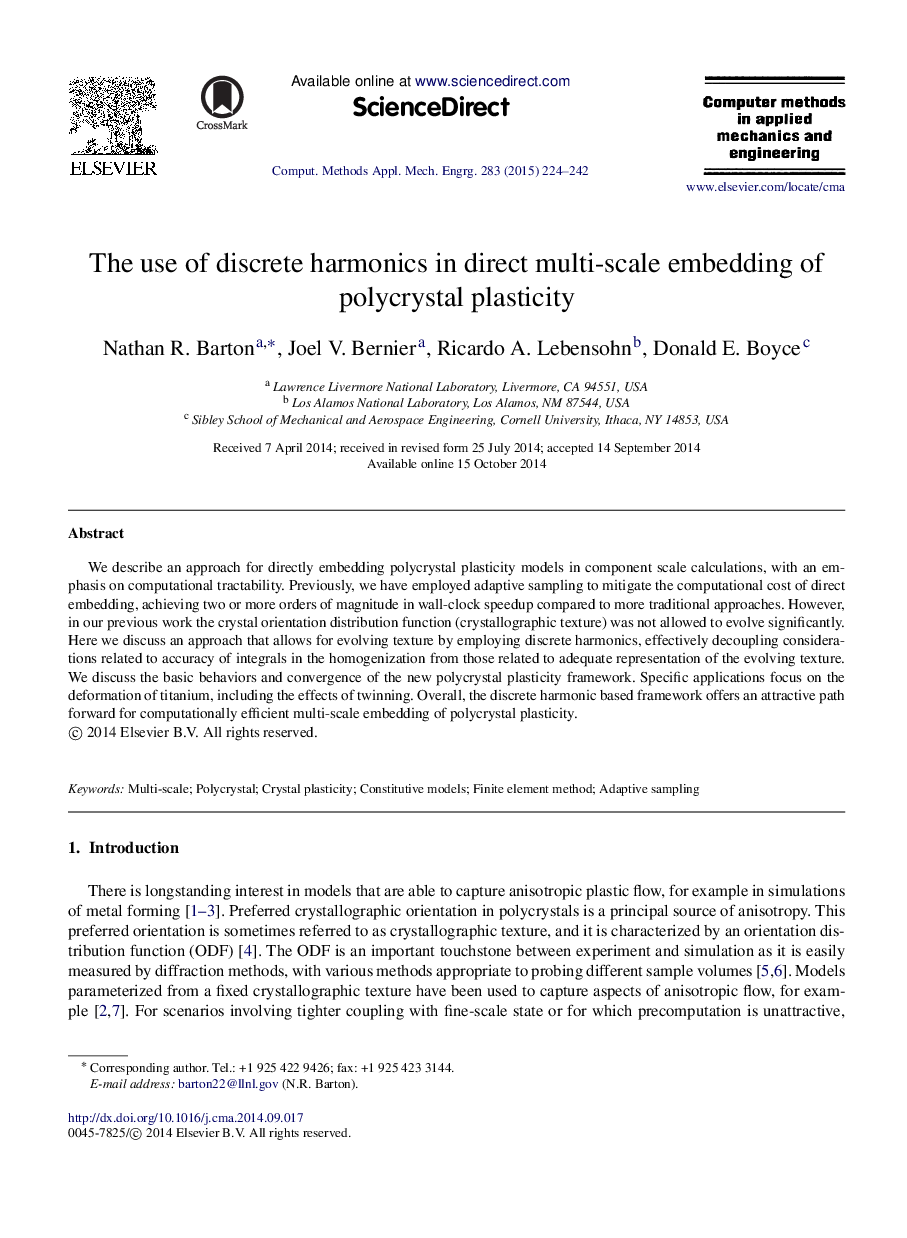| Article ID | Journal | Published Year | Pages | File Type |
|---|---|---|---|---|
| 6917134 | Computer Methods in Applied Mechanics and Engineering | 2015 | 19 Pages |
Abstract
We describe an approach for directly embedding polycrystal plasticity models in component scale calculations, with an emphasis on computational tractability. Previously, we have employed adaptive sampling to mitigate the computational cost of direct embedding, achieving two or more orders of magnitude in wall-clock speedup compared to more traditional approaches. However, in our previous work the crystal orientation distribution function (crystallographic texture) was not allowed to evolve significantly. Here we discuss an approach that allows for evolving texture by employing discrete harmonics, effectively decoupling considerations related to accuracy of integrals in the homogenization from those related to adequate representation of the evolving texture. We discuss the basic behaviors and convergence of the new polycrystal plasticity framework. Specific applications focus on the deformation of titanium, including the effects of twinning. Overall, the discrete harmonic based framework offers an attractive path forward for computationally efficient multi-scale embedding of polycrystal plasticity.
Keywords
Related Topics
Physical Sciences and Engineering
Computer Science
Computer Science Applications
Authors
Nathan R. Barton, Joel V. Bernier, Ricardo A. Lebensohn, Donald E. Boyce,
